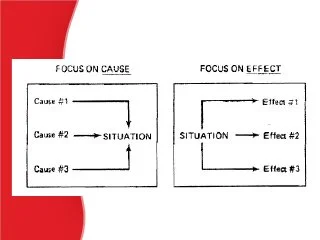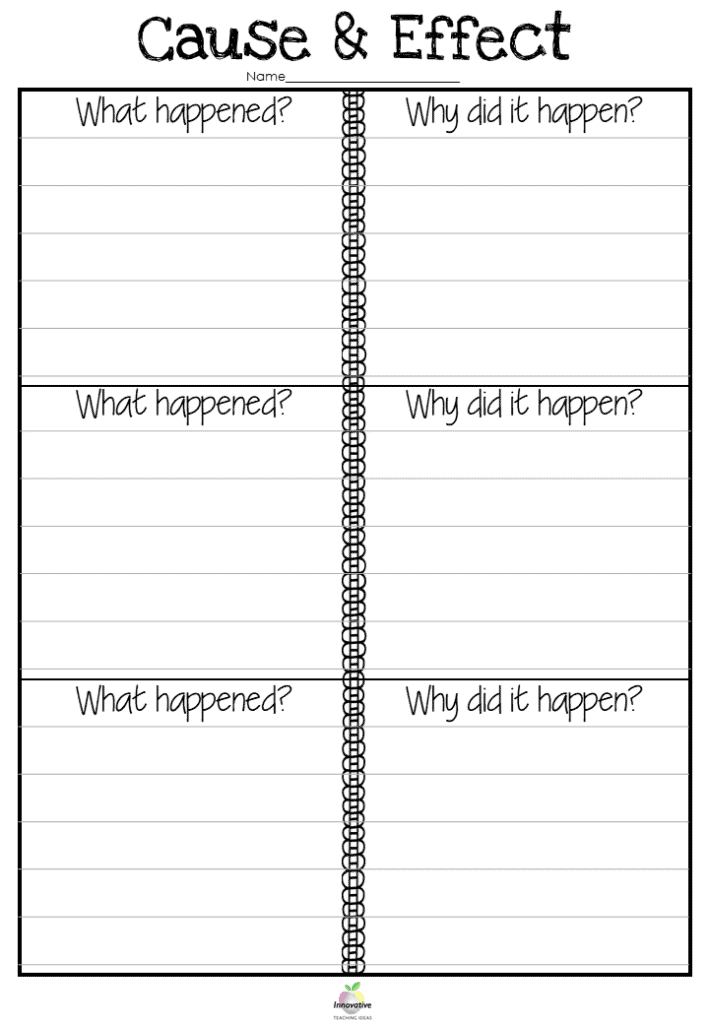Lesson 1: What Is a Cause/Effect Essay?
Estimated Time: 45 minutes
Lesson Objective: At the end of this lesson, you will be able to explain the features of a Cause/Effect essay
Characteristics of Cause and Effect Essays
The relationship between cause and effect can be pretty simple to understand. As a student you know that if you stay up late the night before a big test, you may not perform well the next day.
In cause and effect essays, the aim is to explain both the causes (the reasons) and the effects (the results) of an event or situation. In these types of essays, it is important that all the different causes and effects are logically connected.
There are two kinds of cause-effect essays. In one method, we focus on the causes of something. This is what we call the “Focus-On-Causes-Method”. This type analyses the causes that lead to a particular effect. For example, “Why do people feel culture shock?”. Using the “focus-on-causes-method” would mean explaining the causes of culture shock and how people end up suffering from its effects.
On the other hand you may want to emphasise the effects of culture shock over the specific causes. To do so, you might identify three or four things that people feel when experiencing culture shock. This is what we call the “Focus- On-Effects-Method” where each body paragraph in your essay specifcally addresses an effect of culture shock.
Take a look at the graphic below highlighting the different approaches of both types of essays.

After choosing your topic, you will then need to determine your purpose and decide whether you want to focus on why something occurred or the causes of those occurrences. Doing so will determine the structure you are going to use. Remember, your essay will end up mentioning both the causes and effects regardless; the structure just determines how your essay will be laid out.
Another important thing to do during prewriting is to consider your audience. They might be unfamiliar with your topic or your topic could be too complex to understand without providing them context. Be sure that causes and effects you mention are logically connected. It’s important to remember that just because an event follows another, doesn’t mean that there is necessarily a relationship between them. You may be mistaking chronological order for causality, which can lead you to us faulty logic in your writing.
Discovering Causes and Effects
After considering your purpose and audience, but before you begin writing or even researching, brainstorm all possible causes and effects. Make a chart (see example below) writing the causes on the left and their effects on the right. Make a list of all the causes of this event you want to write about and ask questions like: “Why did the event happen?” and “What happened as a result of it?”

photo courtesy of literacy ideas.com
Identifying Primary Causes and Effects
Once you have a list of causes and effects, your next step is to sort them and decide which causes or effects are the most important. These would be your primary causes and effects. For example, if your topic is on the possible effects of violent video games on children, two primary effects might be an increase in aggressive behaviour and making violence more accessible. Secondary, or less important effects, could be children learning and using inappropriate words. If you are unsure about how to differentiate between primary and secondary examples, you can use the following questions to help you:
For Causes:
- What are the most obvious and immediate causes?
- What causes, if eliminated, would drastically change the event, problem or phenomenon?
For Effects:
- What are the obvious effects of the event, problems or phenomenon?
- Which effects have the most serious consequences? From whom or where do those consequences come?
